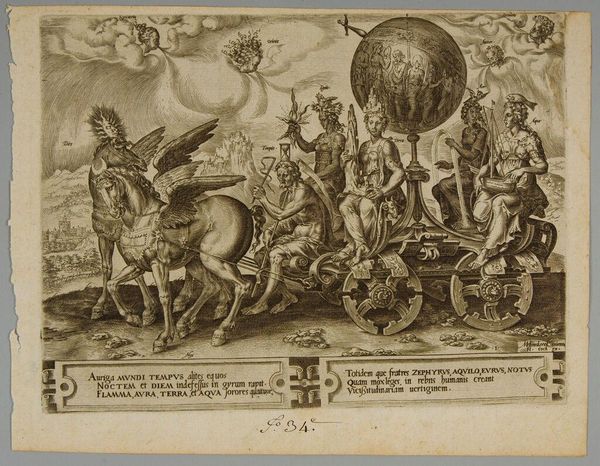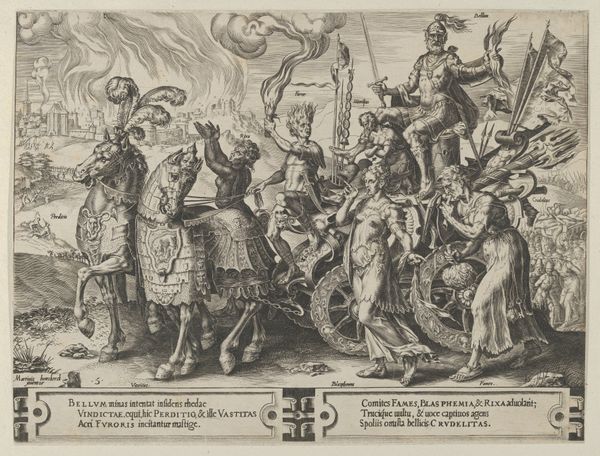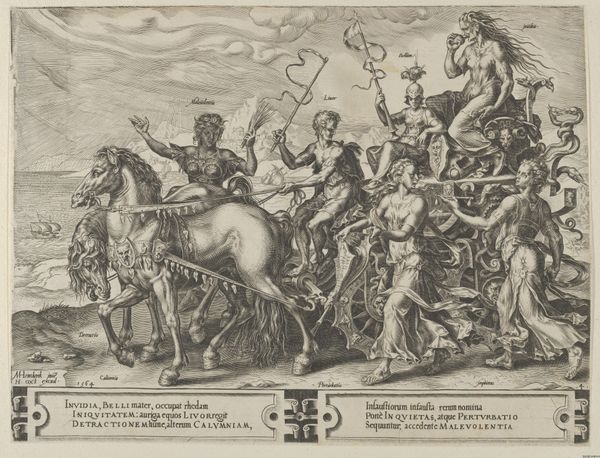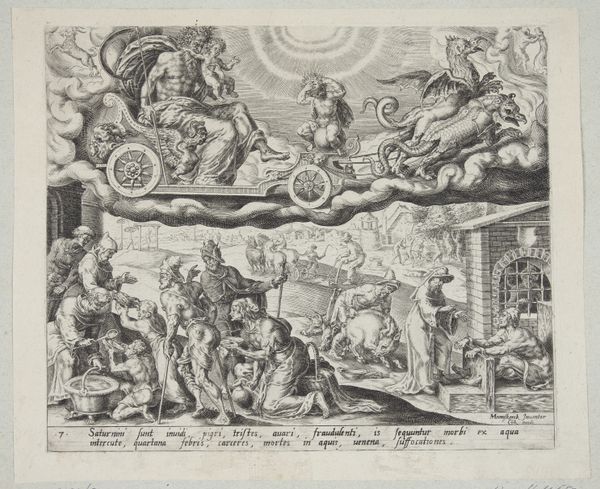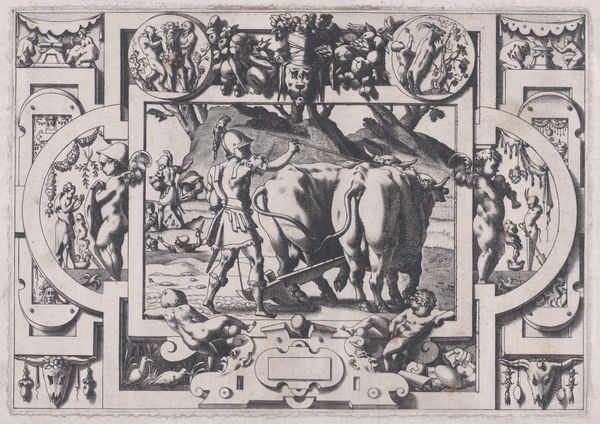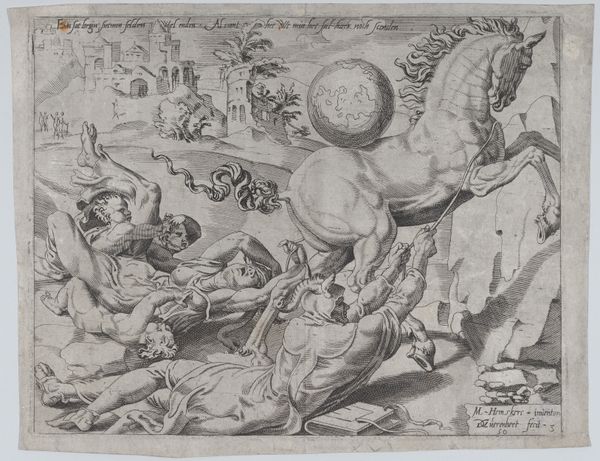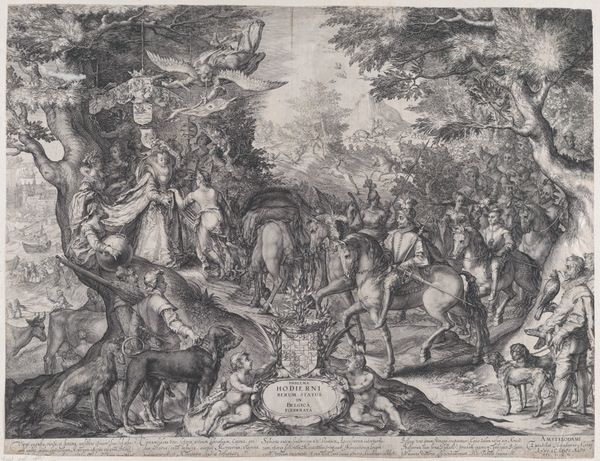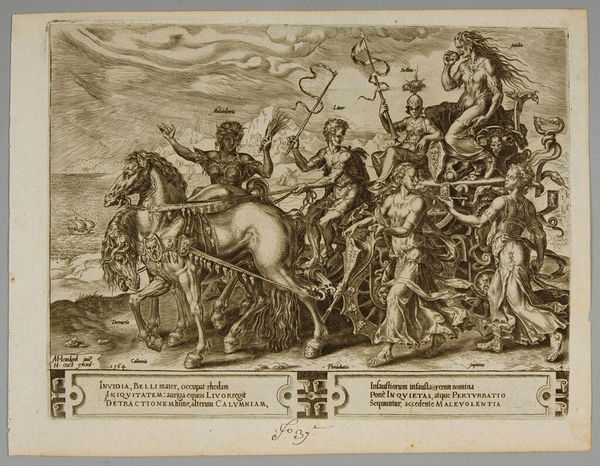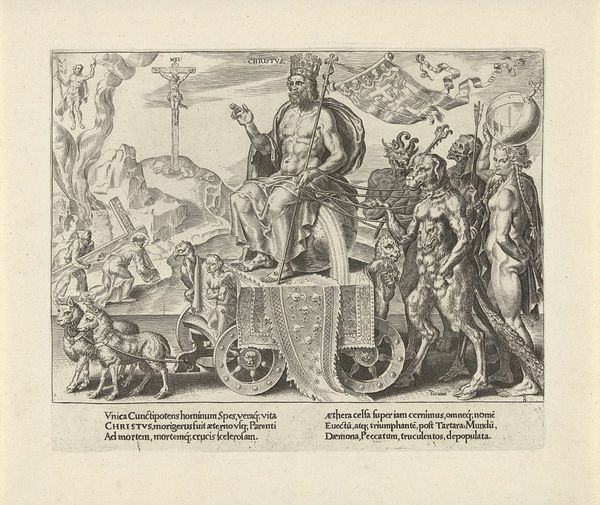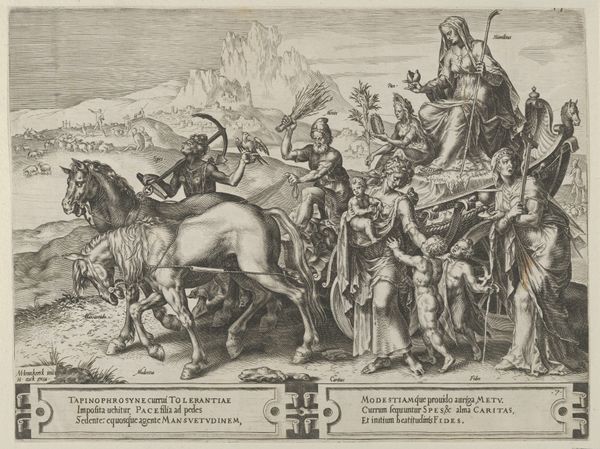
Triumph of the World, from The Cycle of the Vicissitudes of Human Affairs, plate 1 1564
0:00
0:00
Dimensions: Sheet: 8 3/4 × 11 11/16 in. (22.3 × 29.7 cm)
Copyright: Public Domain
Curator: This is a rather imposing print, wouldn't you agree? I'm particularly struck by the almost unsettlingly precise lines in the engraving. Editor: It has an air of solemn procession, like a stage for morality itself. It's so crowded with figures; it's hard to know where to focus! Curator: Well, let's bring some clarity to it. This is “Triumph of the World, from The Cycle of the Vicissitudes of Human Affairs, plate 1,” created around 1564 by Cornelis Cort. The print is currently held here at the Met. It's quite representative of that Baroque fascination with allegorical narratives, all rendered in incredibly detailed linework. Editor: Allegory certainly seems to be the word. What immediately stands out to me are the classical allusions. The winged horses, the figures that seem pulled from mythology, it's almost overwhelming. Do you think this references specific historical or political events? Curator: Absolutely, understanding the socio-political undercurrent is vital. The imagery of a world globe teeming with figures and placed on a carriage with each side showing classical allusions, it presents a clear allegory of world affairs and power. Given the turbulent 16th century context in Europe, these allusions might have served as a subtle commentary on politics or specific social trends of the time. The Latin inscriptions below surely gives insight into this Editor: Those Latin inscriptions, "Auriga Mundi Tempus...", hint at time relentlessly driving the world, as Flamma, Aura, Terra, and Aqua rotate... It seems to echo a concern for the instability and changeable nature of existence that was increasingly important through history at that moment, don't you agree? The constant shifting and relentless, rotating around with "vicissitudes". It's all incredibly fatalistic. Curator: Indeed, it emphasizes that constant tension of human experience with cultural ideas and symbolic manifestations. Even beyond the text. Editor: What do you mean by beyond the text? Curator: Look at how the figure in front has a measure tool and another is wearing some kind of foliage helmet while holding an hour glass... It speaks not just about the present as the writing mentions, but how these figures, acting together, help with visualizing memory and even history in an immediate moment, especially for educated members of the public and royalty in that period. These images spoke as strongly as writing in many ways. Editor: It truly underscores how interwoven art, history, and philosophy were at that time, and that visual dialogue continues even to our modern ears and sensibilities. It makes one reflect on how societies and the world interact with its people, even in the present era. Curator: Yes, truly, there are meanings nestled inside of meanings here, but maybe that is precisely why Cort's "Triumph of the World" continues to enchant.
Comments
No comments
Be the first to comment and join the conversation on the ultimate creative platform.
